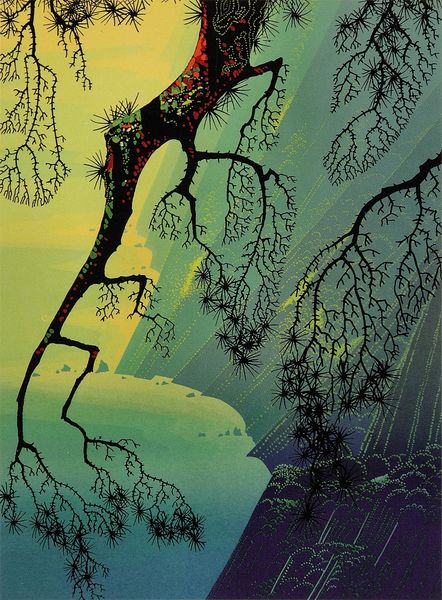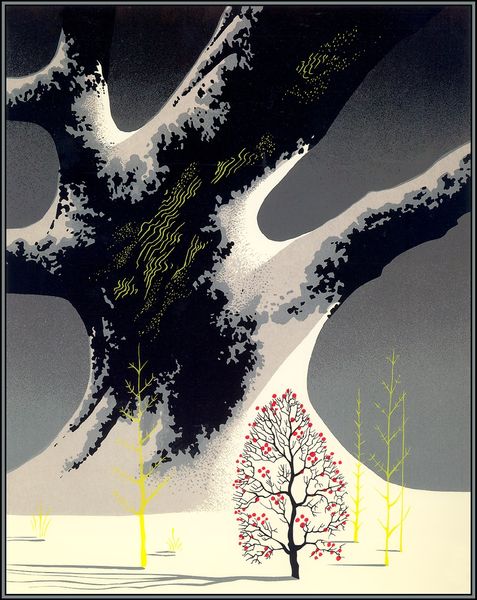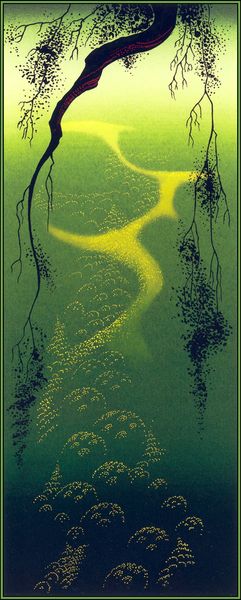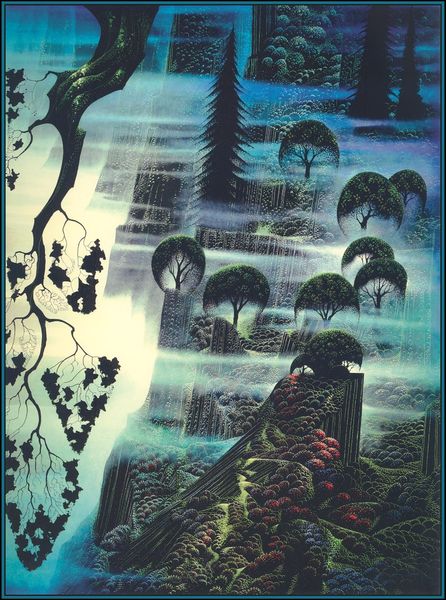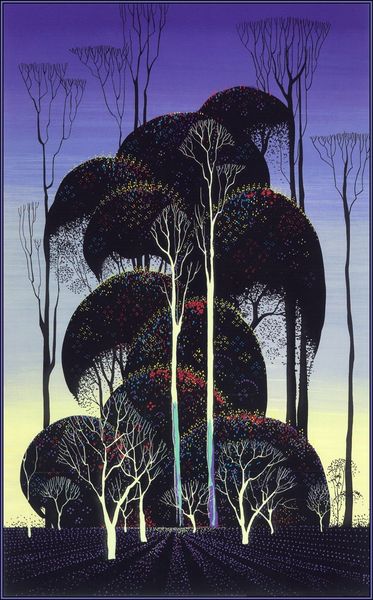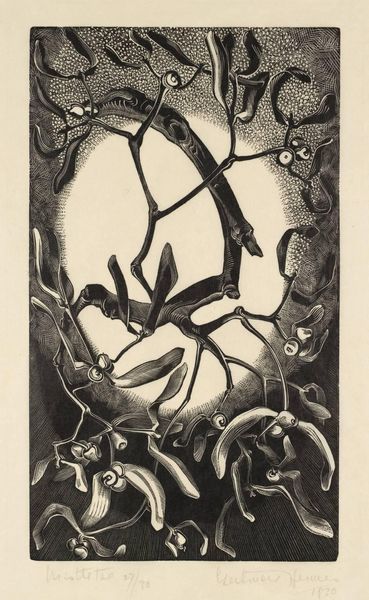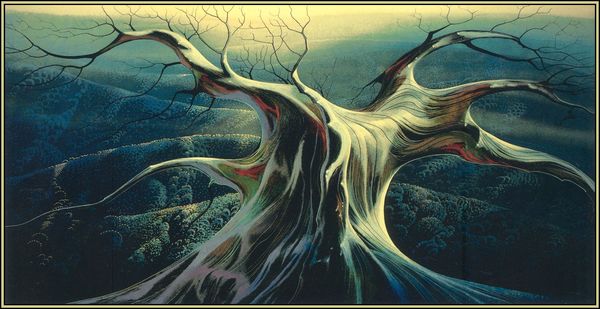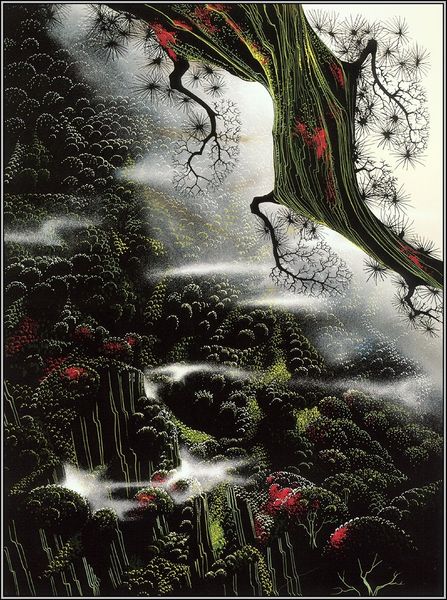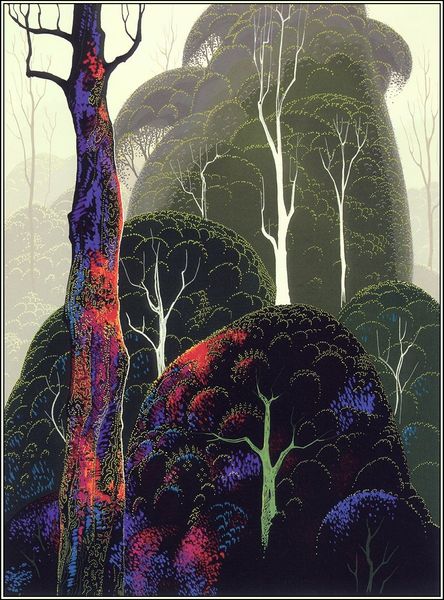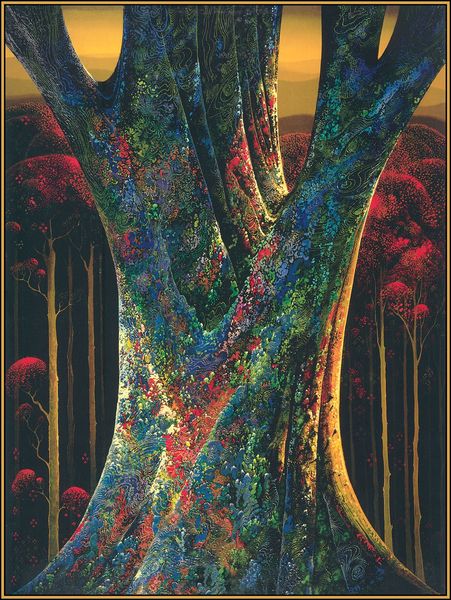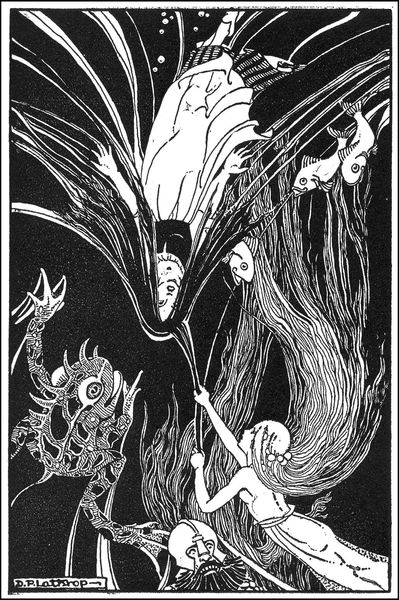
Copyright: Eyvind Earle,Fair Use
Curator: Up next we have Eyvind Earle's "Oak Tree", a tempera painting from 1999. What do you make of it? Editor: There's a stillness to it. The textures on the tree bark suggest depth, yet the scene feels flattened, almost like a stage set. And those subdued greens create an almost dreamlike mood. Curator: Agreed. Earle's approach, particularly his embrace of tempera, lends itself to this captivating, hyper-real aesthetic. It reminds one of Symbolist landscapes but with an undeniable twentieth-century sensibility. Considering the late date, post impressionism looms large, I think. Editor: Definitely, especially if we contextualize this piece with Earle’s established role in the art world, mainly his contributions to Disney. He was crucial in designing the backgrounds for "Sleeping Beauty", deeply embedding stylized nature and vivid colors within mainstream visual culture. Curator: Ah, indeed. The crisp outlines and deliberate colour palettes point towards his craft as animation artist. It suggests the design of this oak predates its execution on canvas. A graphic exercise, first, as landscape second, and artwork last? Editor: Perhaps, yet I believe its placement within gallery spaces transforms its perceived cultural value. While "Sleeping Beauty" entertained and conformed to societal expectations of art as accessible, pieces such as this push against institutional norms. Curator: Do you see a radical subversion, then? To me it is mostly a very solid exploration of line, a demonstration of shape using a very disciplined palette. But perhaps its historical status will decide that for both of us in years to come. Editor: It remains an enigmatic example of how media converges and how artists translate influence between disparate realms of creative expression, certainly something to ponder over! Curator: Indeed, quite an accomplishment in method, history and aesthetic impact.
Comments
No comments
Be the first to comment and join the conversation on the ultimate creative platform.
